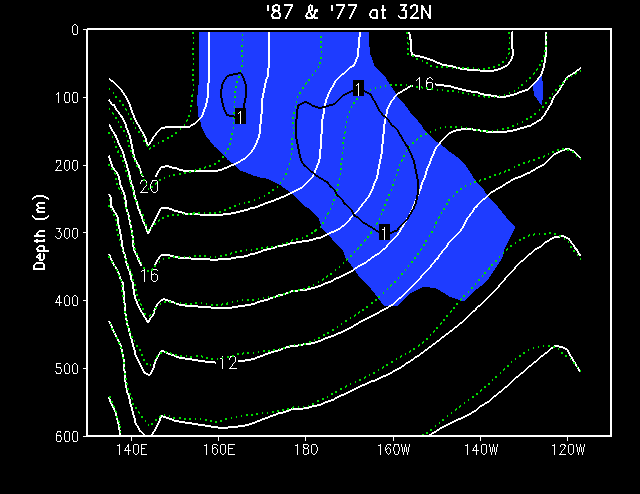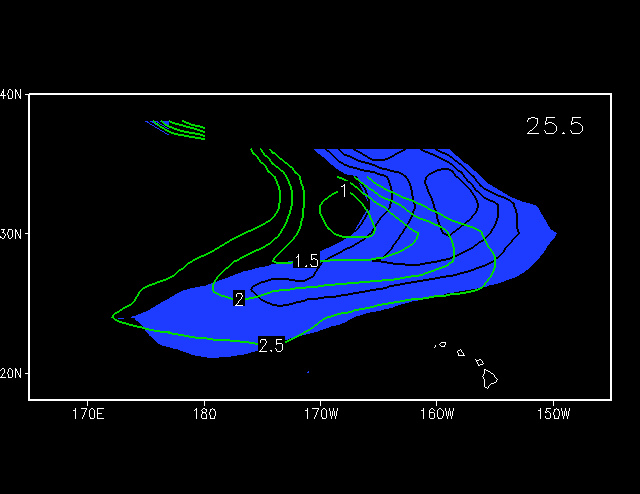WIth this ocean GCM, we examined subsurface temperature variability on decadal time scale (for details, see Xie et al. (2000)).
This model produce mode waters on a range of density surfaces in the western, central and eastern North Pacific, in qualitative agreement with observations.

Figure 1: Longitude-depth
section of temperature at 32N in 1987 (solid) and 1977 (dotted) and their
difference (shade > 0.5C).
These more waters appear as a thermostad or a region of weak stratification in the upper thermocline as they flow southward from their formation regions on the Kuroshio and its extension. In the model, subsurface temperature variability in the central subtropical gyre reaches a maximum within the thermostad (Fig. 1), in contrast to what might be expected from the linear baroclinic Rossby wave theory.

Figure 2: Potential
vorticity distributions on the Sigma-theta=25.5 surface in 1977 (green
contours) and 1987 (blue shade).
This variance maximum is associated with the longitudinal shift in the path of mode waters (Fig. 2). In particular, deepened mixed layer and accelerated eastward currents on the Kuroshio extension by wind changes in mid-1970s act cooperatively to move the central mode waters toward the east, causing large subsurface temperature anomalies.
Besides the local maximum in the central North Pacific subtropical gyre, two additional maxima of subsurface anomaly are identified in the northwestern and southern parts of the gyre, respectively. Among these subsurface anomaly centers, the one in the northwestern North Pacific has a strong effect on the model sea surface temperature, suggesting that the Kuroshio and its extension are a key region of atmospheric thermal forcing.